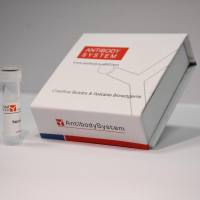Analyses of Apoptosis- Associated DNA Fragmentation In Vivo During Neurodegeneration of the Peripheral Olfactory System in Adult Mammals
互联网
432
DNA fragments of discrete sizes, multiples of monomeric units, have clearly been observed during the period of nuclear degeneration of the terminal lens cell differentiation (Appleby and Modak, 1977). The same puzzling phenomenon has been associated with thymocyte apoptoses (Wyllie, 1980) and rapidly generalized to a wide variety of experimental or natural cases of programmed cell death. By contrast with necrosis, which is a passive lysis of cells following disruption of membrane integrity under external aggressions, programmed cell death involves the specific triggering of stereotyped active processes with de novo gene expression (Ellis et al., 1991; Schwartz, 1991). Ultrastructure of most mammalian cells undergoing programmed cell death was observed to change similary through membrane blebbing, chromatin condensation, and genesis of apoptotic bodies (Kerr et al., 1972), along with internucleosomal DNA fragmentation (Wyllie, 1980). This common sequence of events led to a concept of apoptosis and to the supposition that all programmed cell deaths could occur via apoptosis (Wyllie, 1980).









